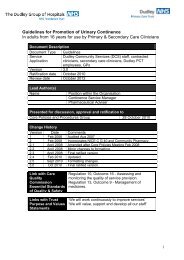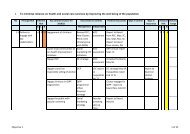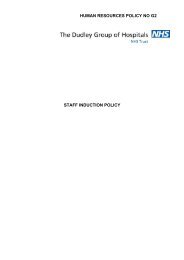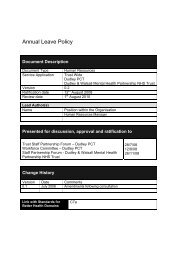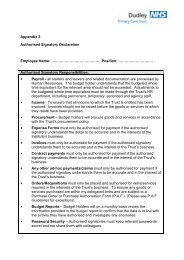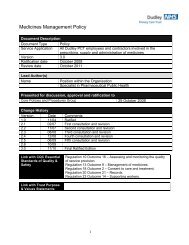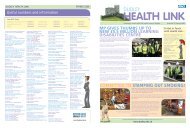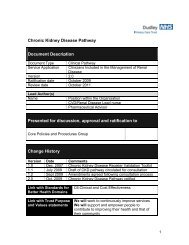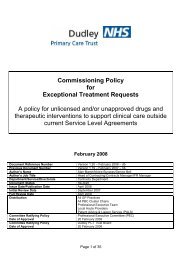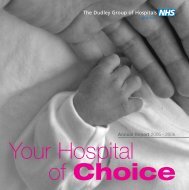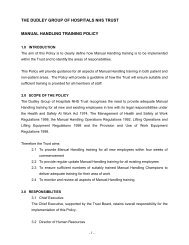Dudley Strategy for Tackling Health Inequalities 2010-15
Dudley Strategy for Tackling Health Inequalities 2010-15
Dudley Strategy for Tackling Health Inequalities 2010-15
- No tags were found...
Create successful ePaper yourself
Turn your PDF publications into a flip-book with our unique Google optimized e-Paper software.
achieved through transfer payments, rather than the taxation system. It is there<strong>for</strong>eparticularly important to ensure that those entitled to benefits take them up.Marmot (<strong>2010</strong>) concludes that, in the current UK system, benefits are inadequate toprovide a healthy standard of living or have failed to reach those in need. They tendto be based on a black and white distinction between being reliant and non-reliant onvarious components of support, creating the so called „cliff edge‟ which discouragespeople from seeking work or staying in work.First time pregnant mothers in receipt of benefit remain vulnerable particularly if theyare under 25 and only receive lower age benefit rates, making it difficult to maintain ahealthy standard of living.The introduction of the minimum wage has had some effect on the distribution o<strong>for</strong>iginal income and the introduction of tax credits has increased support <strong>for</strong> workingpeople on low incomes. The working family tax credit introduction has been shownto be associated with reduction in single parent anxiety and improvement in afamily‟s income has been shown to have a particular impact on adolescent children;the gaps between them and other teenager‟s behaviour narrowed. (Rates of poorself esteem, unhappiness, truancy, smoking and the desire to leave school at 16 allhalved).However the initiatives have not succeeded in reaching all those who are entitledand there remain many citizens who do not have a sufficient income to live a healthylife. Marmot (<strong>2010</strong>) commends the concept of a minimum income standard (MIS) asa basis <strong>for</strong> assessing the adequacy of the benefits system. MIS includes sufficientincome <strong>for</strong> consuming a healthy diet; some allowance <strong>for</strong> expenses related toexercise costs; and costs related to social integration and support networks; inaddition to the items customarily included in the calculation of minimum income. TheMIS is different <strong>for</strong> people in different circumstances. For some groups the MIS ishigher than the currently defined poverty line (60% median income). Using the MIS,only 2/5ths of those with no children in receipt of income support meet MIS. Forcouples and single parents with children income support levels are approximately2/3 rd of MIS.A <strong>Health</strong>y Standard of Living <strong>for</strong> All: What do we know <strong>for</strong> <strong>Dudley</strong>?Table 4 below shows the average weekly household income <strong>for</strong> <strong>Dudley</strong> andEngland, by national quintile. (Using national quintiles, it should be noted that thereare no households in <strong>Dudley</strong> which fall into the top quintile <strong>for</strong> England).42




